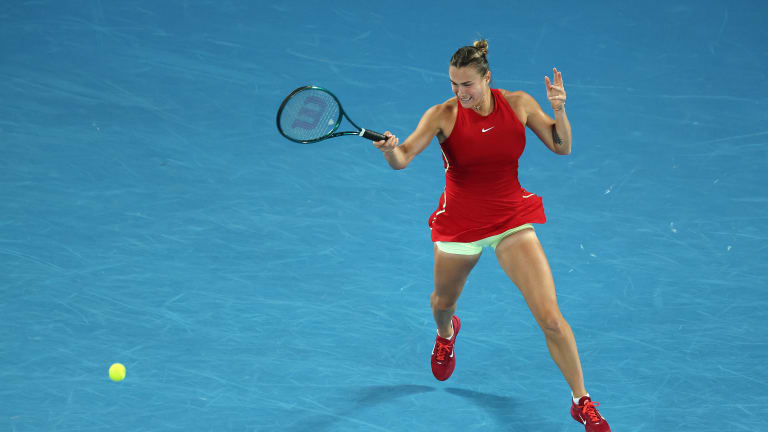It’s an indication of a player’s “desire to dictate the point.” How much does that really matter?
Published Jan 24, 2024
Eagle-eyed tennis junkies watching the Australian Open broadcasts may have noticed a new statistic in the tournament’s match summaries this year. Down near the bottom, among the winners and errors and serve percentages and total points won, is a stat line that sounds very different—maybe even a little jarring:
“Hunting 3rd-shot forehands.”
The category was created by Game Insight Group (GIG), a joint venture between statisticians at Victoria University and Tennis Australia, which runs the Australian Open. GIG has been pushing the advanced-stat envelope at the event for the last half-decade; in 2024, it started keeping track of nine new metrics. Some are self-explanatory—“pressure points won,” “early breaks converted”—and others more abstract—“break force,” “ultimate defender,” “physical battle.”
“Hunting 3rd-shot forehands” is mostly self-explanatory. It measures the percentage of times the server hits a forehand on the first shot after the serve (the third shot overall in the rally). According to GIG, this number is worthy of our attention because it’s an indication of a player’s “desire to dictate the point.”
Big fan of the “Hunting 3rd shot Forehand” stat… Shows who is trying to dominate the rallies and play the match on their terms. #AusOpen pic.twitter.com/vRuyHGhSuI
— Qasa (@QasaAlom) January 18, 2024
Why add the highly non-mathematical word “hunting” to it? Presumably the 3rd-shot percentage simply records the number of times a player hits a forehand after the serve, and doesn’t try to judge whether he or she made a special effort to hunt it down. But it does make it sound exciting.
“Hunting” also gives us a better idea of why the statistic is more significant now than it has been in the past. Pro tennis in recent years has been all about the forehand. Players are told to hit it early and often in every rally; to run around their backhands whenever possible; to use their serves as a way to set up their forehands. The “serve plus one” is now at the heart of almost everyone’s strategy.
The vogue for forehands and the serve-plus-one grew out of the analytical insight—promoted most famously by Craig O’Shannessy, former stat man for Novak Djokovic—that the vast majority of points last from between one to four shots. No matter how often we hear complaints about today’s endless rallies, most of them are over in a hurry. We notice and remember the long ones; the short ones not so much.
This means you want to be the player who gets the first strike in. Which means you want to hit the ball from your stronger side as soon as you can. In most cases—but certainly not all—that’s the forehand side. The theory has numbers to back it up. As Jeff Sackman at the Tennis Abstract blog writes, 57.5 percent of third-shot forehands result in a point won, compared to 50.9 percent of third-shot backhands.
